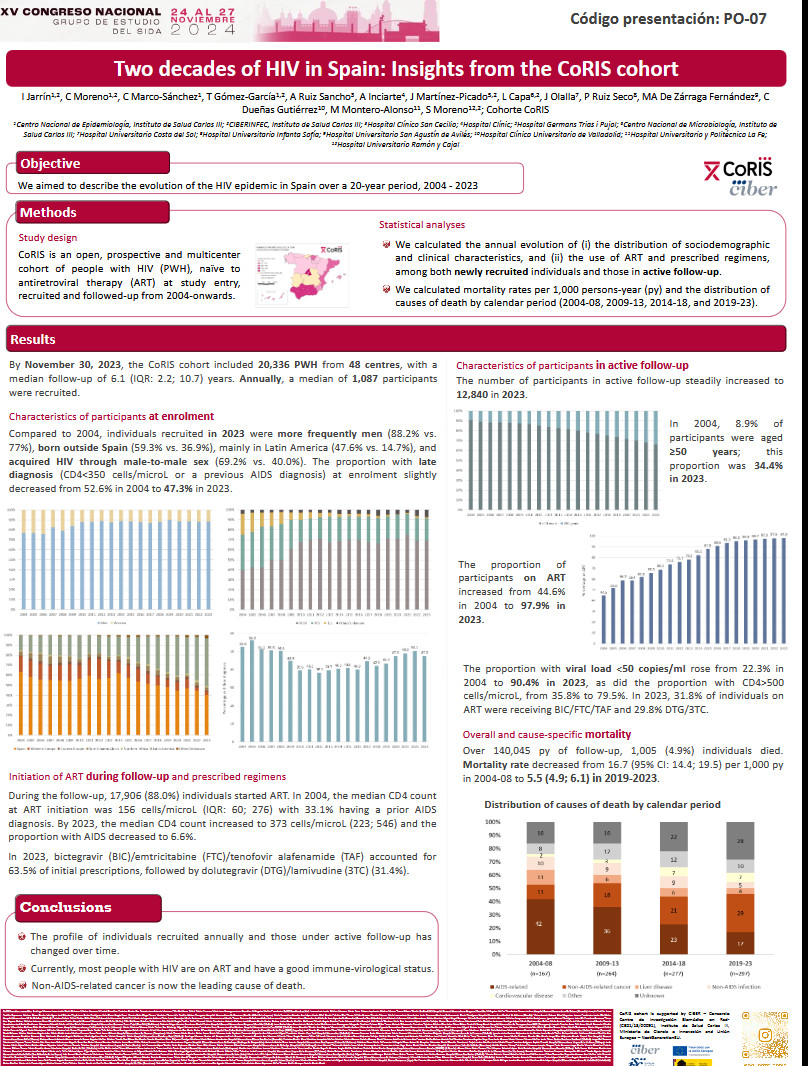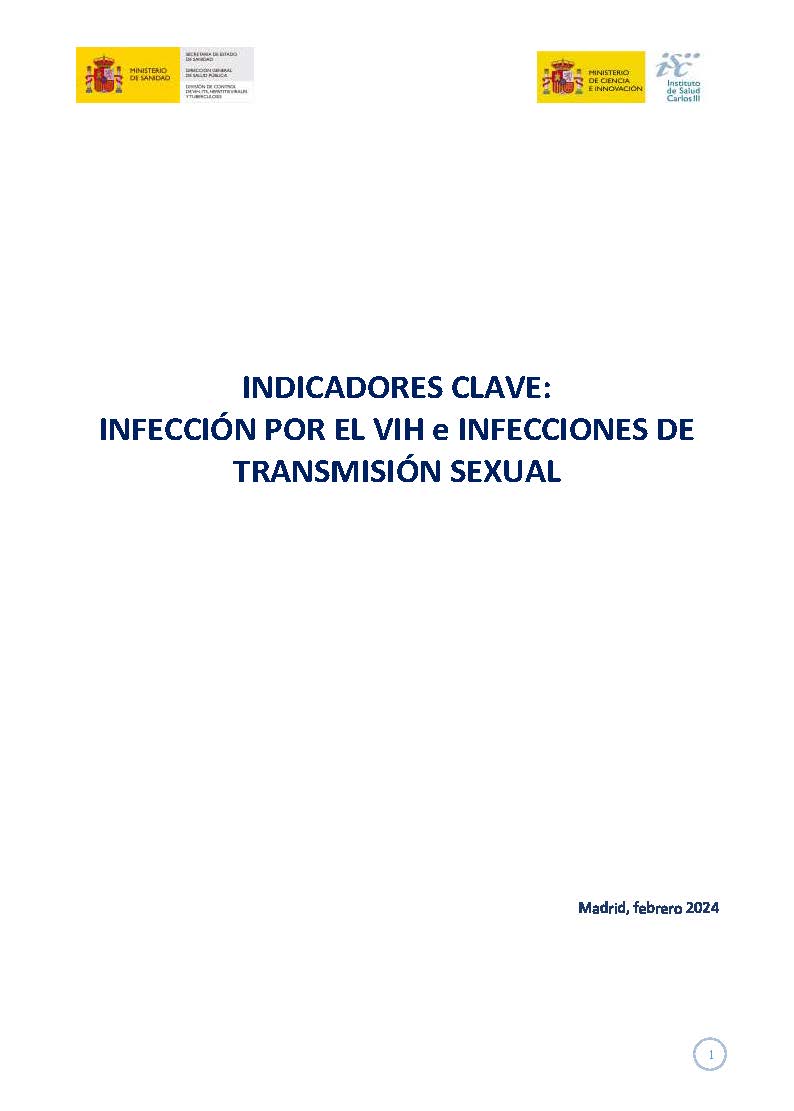Catàleg general VIH/sida

Two decades of HIV in Spain: insights from the CoRIS Cohort
Resum
Objectives: To describe the evolution of the HIV epidemic in Spain over a 20-year period, 2004-2023. Methods: We used data from the CoRIS cohort to calculate the annual evolution of the distribution of sociodemographic and clinical characteristics, and the use of antiretroviral therapy (ART) and prescribed regimens among both newly recruited treatment naïve-individuals and those in active follow-up. We also calculated mortality rates per 1,000 persons-year (py) and the distribution of causes of death by calendar period (2004-08, 2009-13, 2014-18 and 2019-23). Results: By November 30, 2023, the CoRIS cohort included 20,336 individuals from 48 centres, with a median follow-up of 6.1 years (IQR: 2.2; 10.7). Annually, a median of 1,087 new participants were recruited. Compared to 2004, individuals recruited in 2023 were more frequently men (88.2 vs. 77.0%), born outside Spain (59.3 vs. 36.9%), mainly in Latin America (47.6 vs. 14.7%), and acquired HIV through male-to-male sex (69.2 vs. 40.0%). The proportion with CD4< 350 cells/µL or an AIDS diagnosis at enrolment slightly decreased from 50.9% in 2004 to 45.6% in 2023. During the follow-up, 17,906 (88.0%) individuals started ART. In 2004, the median CD4 count at ART initiation was 156 cells/µL (IQR: 60; 276) with 33.1% having a prior AIDS diagnosis. By 2023, the median CD4 count increased to 373 cells/µL (223; 546) and the proportion with prior AIDS decreased to 6.6%. In 2023, bictegravir (BIC)/emtricitabine (FTC)/tenofovir alafenamide (TAF) accounted for 63.5% of initial prescriptions, followed by dolutegravir (DTG)/lamivudine (3TC) (31.4%). The number of participants in active follow-up steadily increased to 12,840 in 2023. In 2004, 8.9% of participants were aged = 50 years; this proportion was 34.4% in 2023. The proportion of participants on ART increased from 44.6% in 2004 to 97.9% in 2023. Similarly, the proportion with viral load < 50 copies/ml rose from 22.3% to 90.4%, as did the proportion with CD4> 500 cells/µL, from 35.8% to 79.5%. In 2023, 31.8% of individuals on ART were receiving BIC/FTC/TAF and 29.8% DTG/3TC. Over 140,045 py, 1,005 (4.9%) individuals died. Mortality rate decreased from 16.7 (95%CI: 14.4; 19.5) per 1,000 py in 2004-08 to 5.5 (4.9; 6.1) in 2019-2023. Figure shows the distribution of causes of death by calendar period. Conclusions: The profile of individuals recruited annually and those under active follow-up has changed over time. Currently, most people with HIV are on ART and have a good immune-virological status. Non-AIDS-related cancer is now the leading cause of death.
Autoria:
JARRÍN VERA, Inmaculada; MORENO, Cristina; MARCO SÁNCHEZ, Cristina; GÓMEZ GARCÍA, Teresa; RUIZ SANCHO, Andrés; INCIARTE, Alexy; MARTÍNEZ PICADO, Javier; CAPA, Laura; OLALLA SIERRA, Julián; RUIZ SECO, Pilar; ZÁRRAGA FERNÁNDEZ , Miguel Alberto de; DUEÑAS GUTIÉRREZ, Carlos; MONTERO ALONSO, Marta; MORENO GUILLÉN, Santiago
Autoria institucional: CoRIS (Cohorte de la Red de Investigación en Sida) (España)
Autoria institucional: CoRIS (Cohorte de la Red de Investigación en Sida) (España)
Fitxa bibliogràfica
- Any de publicació:
- 2024
- Descripció física:
- [1] p.
- Format:
- Fulletó
- Tipus de document:
- Col·loquis i ponències
- Notes:
- Póster presentado en el XV Congreso Nacional Gesida celebrado en Zaragoza (España) del 24 al 27 de noviembre de 2024.





